An Episcopal mission was organized in Durham in 1878 when a minister named Joseph Blount Cheshire was ordained and appointed rector of the Chapel Hill church, and Bishop Atkinson (who had preached the first Episcopal service in Durham) suggested that he should also devote time to the newly organizing Durham congregation if warranted.
Cheshire walked to Durham on Sunday, May 26, 1878. Per the Herald, which did a quite poorly written feature on St. Philip's on 05.25.80:
He was greeted by 13 people [...] Cheshire's meeting with the original group continued once a month - mostly in public buildings or wherever there was a place they could gather.
The Reverend (later Bishop) J.B.Cheshire split time between Durham and Chapel Hill over the next three years.
The church was officially organized in 1880 and named St. Philip's after Philip the Deacon in the New Testament.
In 1880, seeking to find a permanent home for the church (and using the $300 he had left from his former law practice) he bid on land at the eastern point of Five Points to provide the church with a structure of its own. He bid up to $405, and purportedly became quite concerned about how he was going to pay this price; he was therefore relieved when another bid came in at $406. However, land became available on East Main St., which he then purchased. The original frame church building was constructed in 1880, which one 1895 source called
"A neat and substantial frame building on the eastern end of Main Street. The membership is not very large, but considering the fact that some years ago there were scarcely no Episcopalians in Durham, the increase has been quite rapid."
The original church.
(Courtesy St. Philip's Archives)
In June 1906, the original frame church was moved to the side of the church lot to allow construction of the new stone church structure; the original structure was retained and continued to be used by the congregation. (Imagine - reusing buildings instead of trashing them...) The new Gothic Revival church, designed by Ralph Adams Cram, who also designed the cathedral of St. John the Divine in New York City, was constructed at a cost of ~$21,000 between 1907-8 and began active use in 1908. It is the oldest remaining church building in downtown Durham.
(Courtesy Durham County Library)
Boyd's history of Durham describes the downtown churches (Trinity Methodist, First Baptist, First Presbyterian, and St. Philip's) as the churches of the "property owners" in town, and the neighborhood that grew on the east side of downtown, along East Main, Liberty, Dillard, and Holloway, certainly housed many of the wealthier citizens in Durham.
A view of the 1908 church entrance, looking northwest (which shows a residential structure on Queen St.)
(Courtesy St. Philip's Archives)
The original, frame church building was still in use in 1934, but was torn down soon after that point.
Even by the 1930s, the previously residential section of East Main St had begun to erode.
Before 1937, the church's west-side neighbor (at the northeast corner of E. Main and N. Queen), the William Guthrie House, was torn down and replaced with a gas station.
The William Guthrie house, looking north from E. Main ~1895.
(Courtesy Duke Archives)
The AG Carr house across the street was also torn down to make way for a gas station during this period.
In 1942, the east-side neighbor, the beautiful Fuller House, was torn down to make way for the new
union bus terminal, which replaced the previous one at Rigsbee, Chapel Hill, and Mangum Sts.
Below, a view of the church in the late 1940s/ early 1950s, with the service station to the west and the union bus station to the east.
Looking northeast.
(Courtesy St. Philip's Archives)
Copley's gas station - later Johnson's - was actually owned by the church and leased by the church to the station, according to the 05.25.80 Herald article. The church had a profit share on the gas station in addition to rent.
Reverend David Yates was rector from 1935 to 1945. Described by the Herald as a "full-blown pacifist" (which seems a little oxymoronic, Yates was a contoversial figure during World War II. The Herald elaborates that he followed "beloved Sidney S. Bost," who evidently was an ardent supporter of the U.S. World War I war effort and quite popular, justifying his popular position as "whoever loses his life for righteousness sake shall find it. We are making war on war." Aren't we always.
The Herald goes on to re-describe Yates as an "absolute pacifist."
He would not support the war effort. According to many members, he would not even pray for sons and daughters who were in the service. He would not allow the flag in the church. Those were tense times, particularly for families who had relatives in the service. And most of them did. Yet Yates remained at St. Philip's through the war before he went to Chapel Hill. Although some members did leave St. Philip's and others may have reduced their giving, most, while disagreeing with his extreme pacifism, still though of him as saintly and as a caring pastor.
In 1945, George Watts Carr designed a new parish house addition for the church, which was constructed on the west side of the property, just to the north of the gas station.
Looking northeast, 1950s.
(Courtesy St. Philip's Archives)
Looking east-northeast, 1950s.
(Courtesy Herald-Sun)
In 1947, the gas station across the street which had replaced the Carr house was torn down to make way for the new Sears and Roebuck Department Store.
The gas station and the parish house coexisted for several years, but the gas station was torn down by 1959. According to the Herald.
More than one set of parents was dismayed upon learning that a son or daughter had skipped Sunday school and taken offering change to play the pinball machines at the gas station. (Now, one member joked, the kids go to the bus station.)
The 1950s-1960s accelerated the challenges for all of the downtown churches, as the natural neighborhood base for the congregation eroded with suburban flight, and urban renewal destroyed the surrounding neighborhood structures, leaving the churches, including St. Philip's, isolated along a commercial/institutional strip in downtown.
The four churches of the one-time 'landed-gentry' downtown adjusted their focus as the neighborhood around them changed, uniting to form Congregations in Action, which provided assistance to elderly residents of Oldham Towers and, later, the Liberty St. Apartments.
St. Philip's in the 1970s.
The Herald wrote in 1980 that the unpretentious name "St. Philip's"
...befits [the church] today. The church is not known as a gangbuster in evangelism. But it is known for its Soup Kitchen, a place where the down-and-out transients can get a free sandwich and a cup of soup. And, at a time when theologians give the center-city little chance to survive, St. Philip's doesn't act as if its mission is ending. For instance, the church recently acquired a quarter-block of land where it plans to build a gymnasium, auditorium, and banquet hall. St. Philip's could have become a comfortable little country-club parish instead of, as some members call it, the "church beside the bus station." Bishop Edward Pinick did, in fact, suggest in the 1940s that the congregation move to a more serene setting, such as Hope Valley, but the congregation was united against the move.
No doubt, some may have regretted staying put when Malcolm X [Liberation] University was being operated at the corner of [West] Pettigrew and [South Dillard], with eyeshot of the St. Philip's parish house, in the 1970s.
The controversial university owed at least part of its existence to a grant from the national Episcopal church, and it was named after the the Black Muslim leader whose avowed purpose at that time was [to] get blacks [sic] to view whites as the Devil.
St. Philip's, an integrated church even back to the late 1800s, suffered some outside criticism and from inside revolt. Some members left and several others quit making pledges. After Malcolm X [Liberation] University moved to Greensboro a year later, normalcy began to return."
After the Union Bus Terminal closed, several tenants used the building, including, in its last incarnation, a plasma center. St. Philip's became the owner of that Streamline Moderne building in the 1990s. While I can't confirm this, I've been told that it was the last bus station of its era in North Carolina when the church demolished it in the late 1990s. That site remains a church-owned vacant lot.
I don't know much about the congregation today, other than the fact that it is still quite active, and currently building another addition onto the Queen St. side of their complex.
The 1908 church, looking northeast, 2007.
The northeast corner of N. Queen and E. Main, location of the William Guthrie house, the Parish House, and the under-construction addition, looking northeast, 2007.

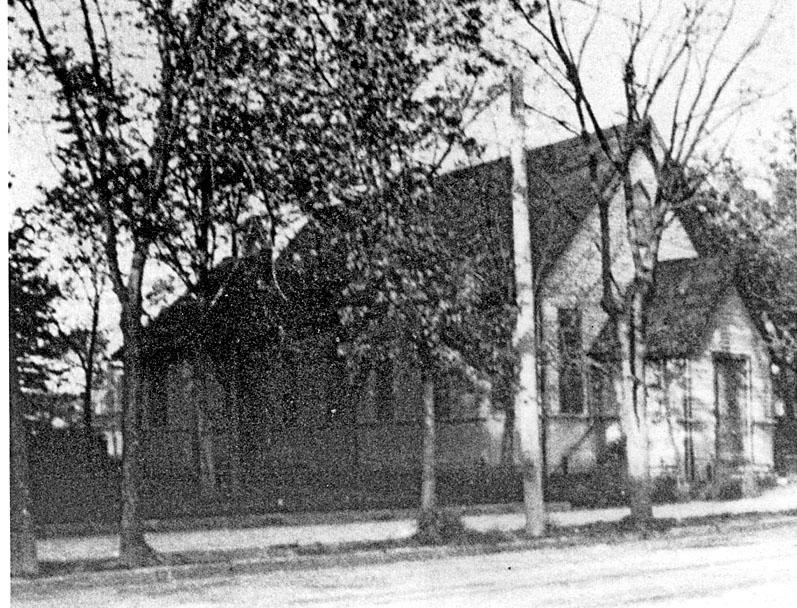

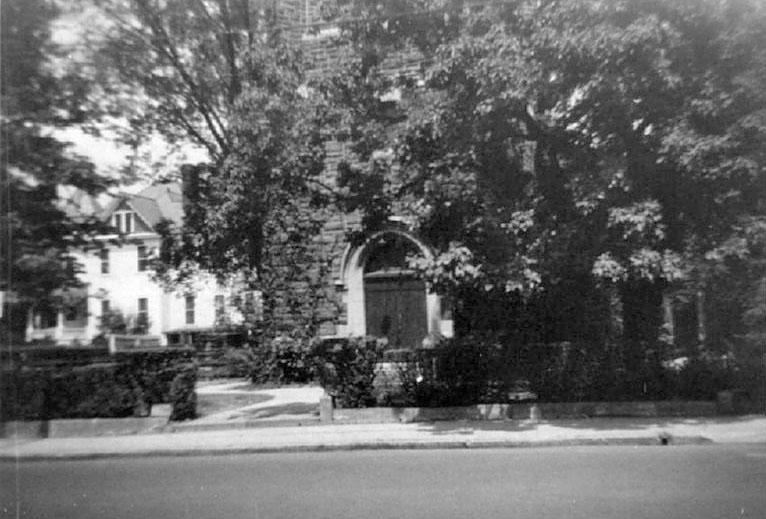
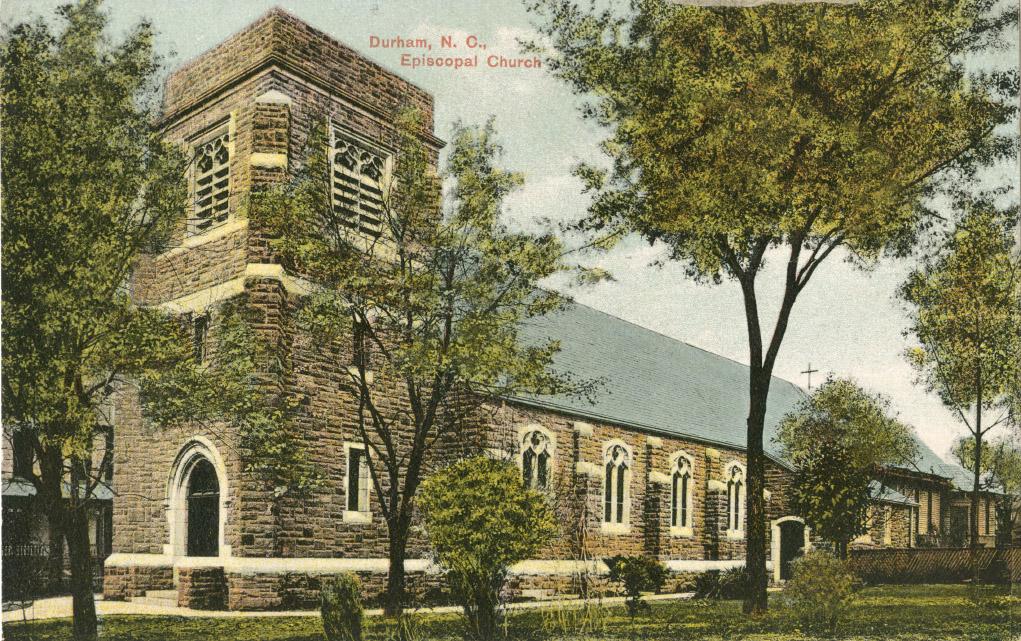
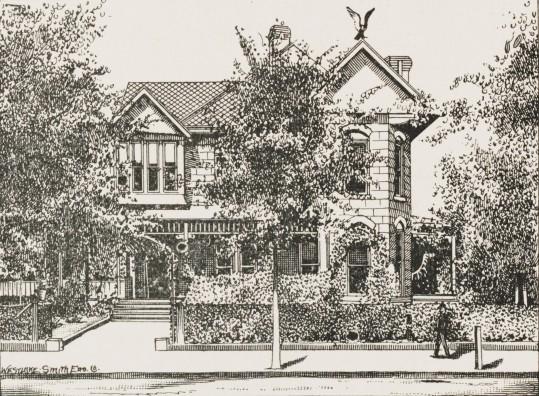
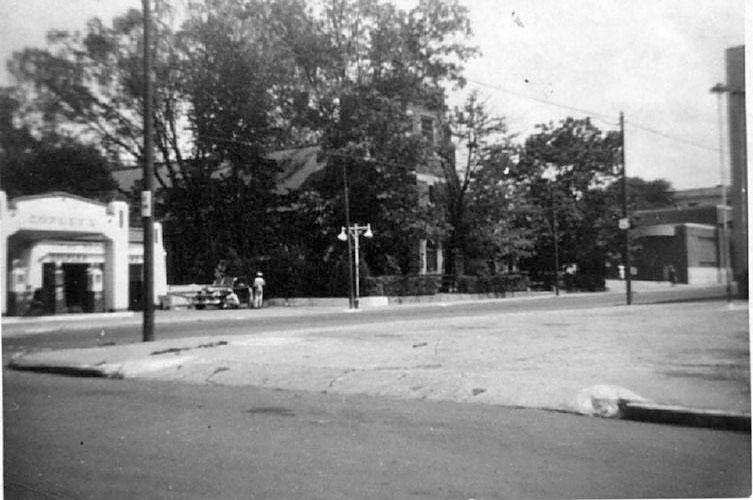
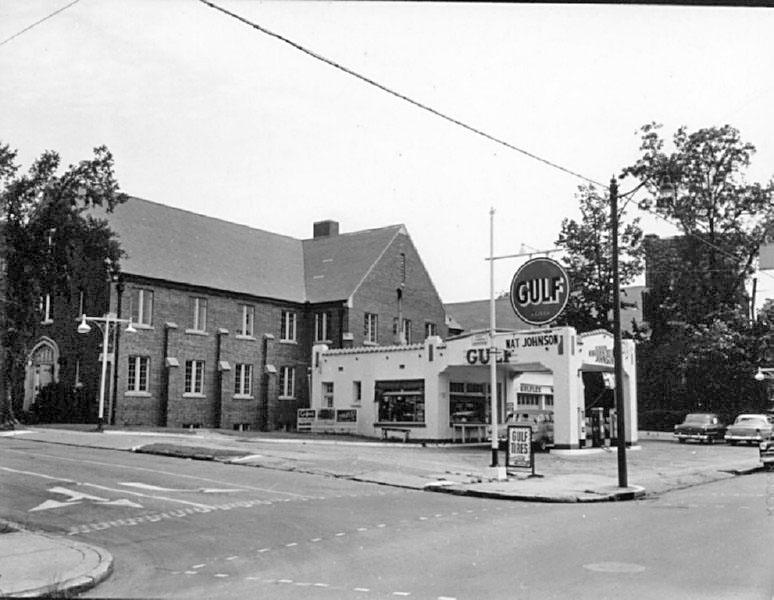
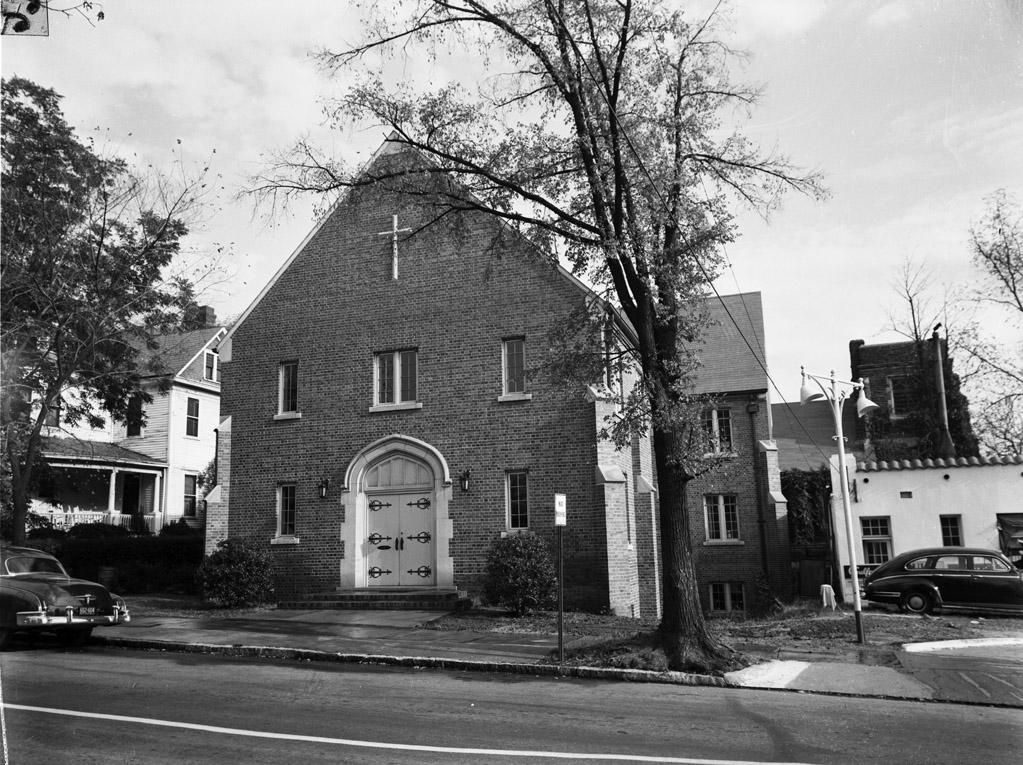
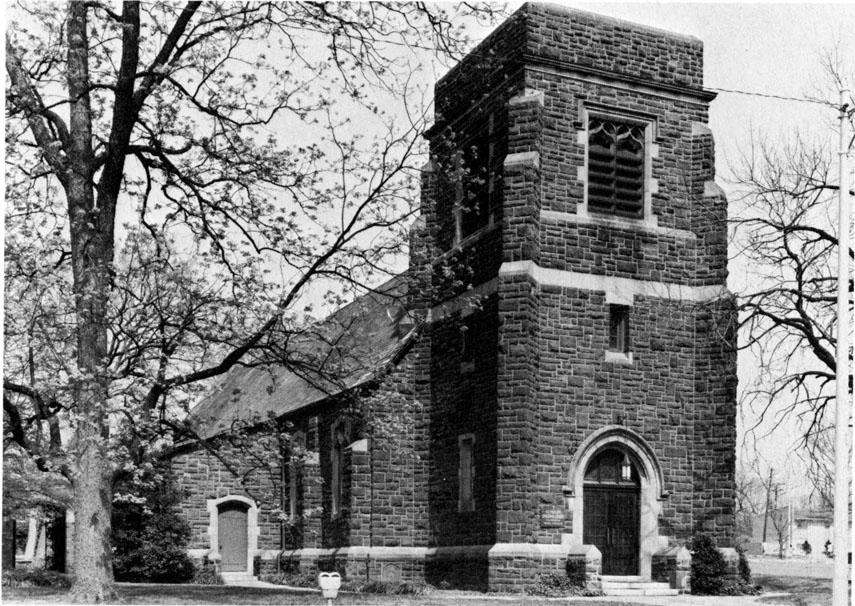
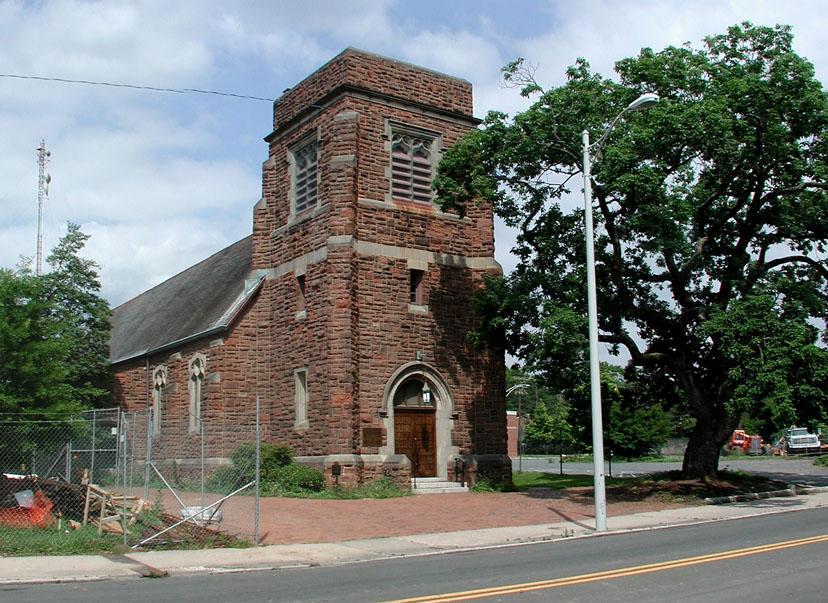
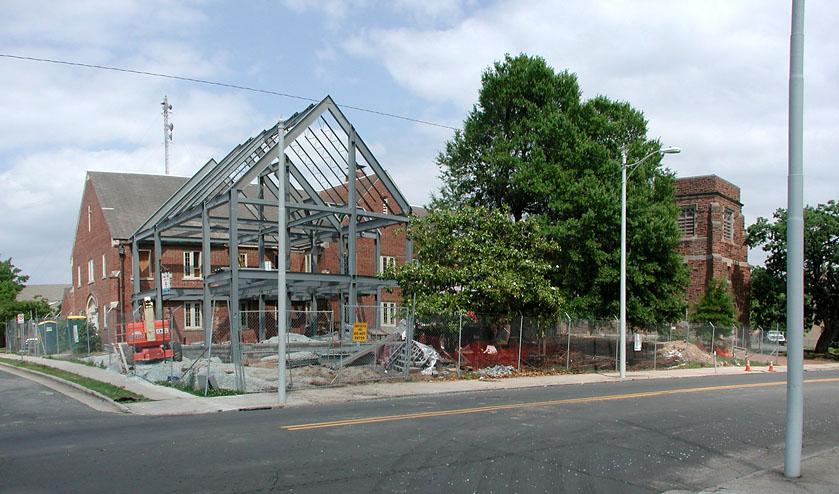
Comments
Submitted by Michael (not verified) on Tue, 5/15/2007 - 4:27pm
What I know about the congregation of St. Phillips: the church keeps a bit more to the Anglican traditions than some Episcopalian churches, but at the same time the clergy there have a tradition of progressivism and support for the changes currently in the US Episcopal church. I've attended services there twice, and know that at least a few community movers and shakers are active members. (Hildegard Rials (Ryals?) is one who springs to mind immediately.) The congregation is on the small side, but I think still very supportive, and affluent enough to keep the church running. St. Phillips is very active with, and I think technically may be the "host" church for, the Urban Ministries shelter. On my two visits, the congregation was very welcoming and friendly.
The inside of the sanctuary is quite beautiful, with the feeling of an Old World church, complete with the high, vaulted dark wood roof and ornately carved rafters. The church garden is more modern, but manages to capture that feeling of quiet solitude that it's supposed to.
Submitted by Gary (not verified) on Tue, 5/15/2007 - 4:59pm
Michael
Thanks for the added information. I thought about mentioning Urban Ministries, but because it seems to have formed out of several organizations (and I'm unsure of the current affiliation) I decided to leave it until I come back around to Liberty and Dillard.
GK
Submitted by Anonymous (not verified) on Wed, 5/16/2007 - 3:45pm
St. Philips actually donated the land on which the current Urban Ministries building sits, and long before the UM center began St. Philips operated a soup kitchen out of thier building. The church has a very strong committment to remaining downtown and sees itself as an urban ministry focused church. Probably one of the most liberal Episcopal churches in NC - St. Philips has a number of active gay/lesbian couples, supports the ordination of gay clergy, and will perform committment ceremonies for gay/lesbian couples if they are members of the church. It has also been active in the Peace movement and with environmental concerns.
They did thier best to find some way to do something useful with the bus station, but the cost of renovation would have been outrageous. The last tenant of the bus station was a place where you could sell plasma. Post-AIDS restrictions on this type of business caused it to fail. When the business closed it was at thta point that the church bought the property. Thery never were a landlord - the property was vacant when they bought it and after finding no way to develop it they had it demolished. St. Philips has no current plans for the space. The incredibly limited parking is problematic - they had considered opearting a school or a downtown day-care on the site, but the square footage required, together with even minimal space for parking, makes this unfeasible. Currently the city allows St. Philips worshippers to park in the lot at Queen St., but if that becomes developed, the church will need the vacant lot where the bus station was for parking.
Submitted by Gary (not verified) on Thu, 5/17/2007 - 11:11am
Anon
Thanks for your additional information about the bus station. I'm sure the church was anxious to prevent another plasma center from moving into the station. I think there are always options to save buildings, and this was a pretty unique one - and a loss to the community to tear it down. I know more than a few people who are still sad it was destroyed.
The county's plans right now for E. Main call for way too much parking, so I'm sure there will be plenty to share. I would hope that St. Philip's would develop the vacant lot into a pleasing structure. It's the same point I try to make to the county - part of doing good for the neighborhood is not solely services provided (i.e. urban ministries) but the environment you create. There is too much vacant land in the neighborhood right now for it to feel like a place people want to be.
And, along those lines, if the parking situation is too severe, there are a number of vacant properties 3 blocks away near Holloway St. I'd encourage you to consider moving in and saving them - you'd be helping the neighborhood, and you could leave your car at home when you walk to church! My girlfriend lives 1 block from St. Philip's, and we walk the neighborhood regularly, particularly to go to 305 South and the library.
Thanks again for your comment.
GK
Submitted by Anonymous (not verified) on Fri, 5/18/2007 - 5:18pm
I attend St. Philip's and was Senior Warden (chairman of the board) when the church acquired the bus station. Renovation and asbestos abatement was cost prohibitive for the parish. And we couldn't find many people who supported keeping the structure, including George Pyne, who called it "an unremarkable building" when he spoke to the Historic Preservation Commission in support of demolishing the station.
Submitted by gary on Sat, 9/10/2011 - 10:16am
I'm surprised by George Pyne's comment, given that he fought to save Union Station from demolition. But architects and other people are prone to fashion, and perhaps he couldn't appreciate a more modern piece of architecture.
GK
Submitted by Allen Murray (not verified) on Sat, 9/10/2011 - 10:19am
You probably know by now that my philosophy on teardowns is to not demolish without a plan. So I can't countenance the demolition of the bus station in order to simply create a vacant lot. I've read the arguments on why it "had to come down." The same arguments have been made about countless pieces of irreplaceable architecture in many places by many people.
But beyond that, I get concerned about what kind of environments churches create around them. It would be all well and good if the parishioners lived in the same neighborhoods as their churches, but for many inner-city churches, such as St. Philip's, that is not the case. (I know of a good number of vacant houses nearby that could use some renovation if they want to, though.) Creating shelters, drug rehab programs, etc. is necessary, but it must be balanced with the knowledge that you are creating an environment that the people in the neighborhood have to live with when the parishioners go back to their side of town. Would (hypothetical) 'you' build what 'you' are going to build in your own neighborhood? If not, then I think it enters the territory of noblesse oblige.
Hard-working folks who don't make enough money to afford to live in market housing, and therefore live in the Liberty St. Apts probably don't really want to live next to a shelter - as much good as it does for folks, it has negative externalities. They live there because they have to.
For instance, build a restaurant - that has a culinary/management program for kids - that serves the neighborhood but that you would send your own kids to or, barring that - you would at least eat at on a Saturday night. Every neighborhood needs balance, and the east side does not have it. Build some low-income housing in Trinity Park, an alternative school in Forest Hills, a shelter in Hope Valley. The east could use middle-income housing, a grocery (since DOT is going to tear down the only one in the neighborhood), retail/jobs, a usable park (Oakwood, the only neighborhood park, is filled with people from the shelter passed out on the grass or not the playground equipment.)
People all want the same things in their neighborhoods, no matter how much money or how little money they have. I'd encourage St. Philip's to plan their construction/use accordingly. That would be a truly meaningful contribution to the neighborhood.
So, what is on the lot now is a large garden. Elderly residents from Oldham Towers, homeless families from Genesis House, and members of St. Philips all work in the garden side-by-side. Once a week they share a common meal from food grown there.
St. Philips as a congregation, and some of its members as individuals (Graham Marlette, Susan Herst, Milo Pynne) are huge advocates for Durham’s revitalization. But the goal and mission of our church is not architecture, but serving our community (in my opinion it is something we do well). If you worked with us side-by-side your suggestions about how we could make a truly meaningful contribution to the neighborhood (your words) might feel a bit less presumptuous. We feel we do make a meaningful contribution to the neighborhood. Your calling what this congregation does noblesse oblige has really turned me off to your site, which I had been a big fan of. I kind of wish I hadn’t stumbled across this page.
Submitted by gary on Sat, 9/10/2011 - 10:23am
Thanks for your feedback, Allen. As you probably noted, the comment was made in 2007, before there was a garden in place, so hardly fair to judge my comment through the lens of what purpose/function the garden serves in 2011.
I know Graham, Susan, and Milo. All good people, none of whom live in Cleveland-Holloway, or Golden Belt, or Edgemont. My point, that still stands, is that people simply don't necessarily make the same decisions for the people in another neighborhood that they would if they lived next door. If you re-read my comment, you'll note that what I said was:
Would (hypothetical) 'you' build what 'you' are going to build in your own neighborhood? If not, then I think it enters the territory of noblesse oblige.
I stand by that statement – if you'd enthusiastically support building something in someone else's neighborhood that you wouldn't build in your own, and then pat yourself on the back for it, I can't respect that. My statement wasn't specifically about St. Philip's – it was generally about churches , anywhere, that draw all or most of their congregation from outside of their immediate neighborhood, and the dynamic created when there is a large disparity between the demographics of the congregation and that of the neighborhood. More broadly, it was simply about NIMBYism. I'm guilty of being dramatic in my phrasing, and I'm sorry if you took that personally, which was not how it was intended. The intent was to challenge the easy assumption of "we're doing good things here" and walking away with self-satisfaction with the notion that better things can be done.
If the church is building things (or demolishing things,) then the church is engaging in architecture, which affects the community around it. You can't disaggregate that element of the community's environment from the elements you want to pay attention to. That's one of my points.
Regarding the rather comment about my working side-by-side with you and my presumption, I've advocated for, fought for, and worked in east-side neighborhoods long enough and hard enough to have a well-informed opinion about what's working and what isn't. I'm out here every day of the week. The relative usefulness or value of my suggestions isn't really affected by whether or not I volunteer for St. Philip's.
Sorry it's turned you off to the site. Although I've toned things down a bit since I made that comment 4 years ago, I hardly set out to make anyone comfortable in their assumptions – in fact, the entire point was to challenge the status quo. I never set out to have fans.
Submitted by Allen Murray (not verified) on Sat, 9/10/2011 - 10:25am
Thanks for your feedback, Allen. As you probably noted, the comment was made in 2007, before there was a garden in place, so hardly fair to judge my comment through the lens of what purpose/function the garden serves in 2011.
I know Graham, Susan, and Milo. All good people, none of whom live in Cleveland-Holloway, or Golden Belt, or Edgemont. Graham lives in OND, Susan in Forest Hills, and Milo in Morehead Hill. My point, that still stands, is that people simply don't necessarily make the same decisions for the people in another neighborhood that they would if they lived next door. If you re-read my comment, you'll note that what I said was:
Would (hypothetical) 'you' build what 'you' are going to build in your own neighborhood? If not, then I think it enters the territory of noblesse oblige.
I stand by that statement – if you'd enthusiastically support building something in someone else's neighborhood that you wouldn't build in your own, and then pat yourself on the back for it, I can't respect that.
Umm, . . . w e built a garden. Certainly I would have built that in my own backyard as well. Hardly an eyesore or a detriment to the community.
My statement wasn't specifically about St. Philip's – it was generally about churches , anywhere, that draw all or most of their congregation from outside of their immediate neighborhood, and the dynamic created when there is a large disparity between the demographics of the congregation and that of the neighborhood.
With only three large Episcoapl congregations in all of Durham (St. Titus and St. Joes are very small) the definition of who is in the neighborhood for a particular parish isn't as menaingful for us as it is for other mainline churches that have a congregation on every other corner. With St.Lukes serving the Northern part of the county, and St. Stephens the Southern, we consider our "neighborhood" to encompass Forest HIlls, Trinity, Park, Old North Durham, Forest Hills,etc. (pretty much everything within about a 10 mile radius of our church). Those neighborhoods are served by no other parish. Our parish is increasingly reflective of our neighborhood, (a shock to some long-time parishoners) with many of the folks who attend now living in neighborhoods that are not gentrified. We are one of the most socioeconomically and racially diverse congregations in the area (which shocks most folk swho pre-judge and think that if we're Episcopal we must be white and upper-middle class. We're not.
More broadly, it was simply about NIMBYism. I'm guilty of being dramatic in my phrasing, and I'm sorry if you took that personally, which was not how it was intended. The intent was to challenge the easy assumption of "we're doing good things here" and walking away with self-satisfaction with the notion that better things can be done.
If the church is building things (or demolishing things,) then the church is engaging in architecture, which affects the community around it. You can't disaggregate that element of the community's environment from the elements you want to pay attention to. That's one of my points.
We did demolish the bus station. We really had hoped someone would buy it and do something good with it. When it became apparant that would not happen we did the only thing we could do. We thought it sad as well, but the building was a net negative - financially, structurally, and in terms of usefulness. I am a firm believer in historic preservation. I also believe that cities are living things that can't stay the same, but sometimes must grow and change. There wasn't a great alternative to demolishing the bus station,and had there been a viable use for the bulding someone would have come forward and invested. Will the garden be there forever? Probably not, but it is a good temporary use. Given who the congregationis, and the role it has played in Durham (since before there was even much of a city there) I'm sure when we do bulid something it will be useful and pleasing. Will you personally like it? Maybe not - but different people have different aesthetic values.
Regarding the rather comment about my working side-by-side with you and my presumption, I've advocated for, fought for, and worked in east-side neighborhoods long enough and hard enough to have a well-informed opinion about what's working and what isn't. I'm out here every day of the week. The relative usefulness or value of my suggestions isn't really affected by whether or not I volunteer for St. Philip's.
Sorry it's turned you off to the site. Although I've toned things down a bit since I made that comment 4 years ago, I hardly set out to make anyone comfortable in their assumptions – in fact, the entire point was to challenge the status quo. I never set out to have fans.
Add new comment
Log in or register to post comments.